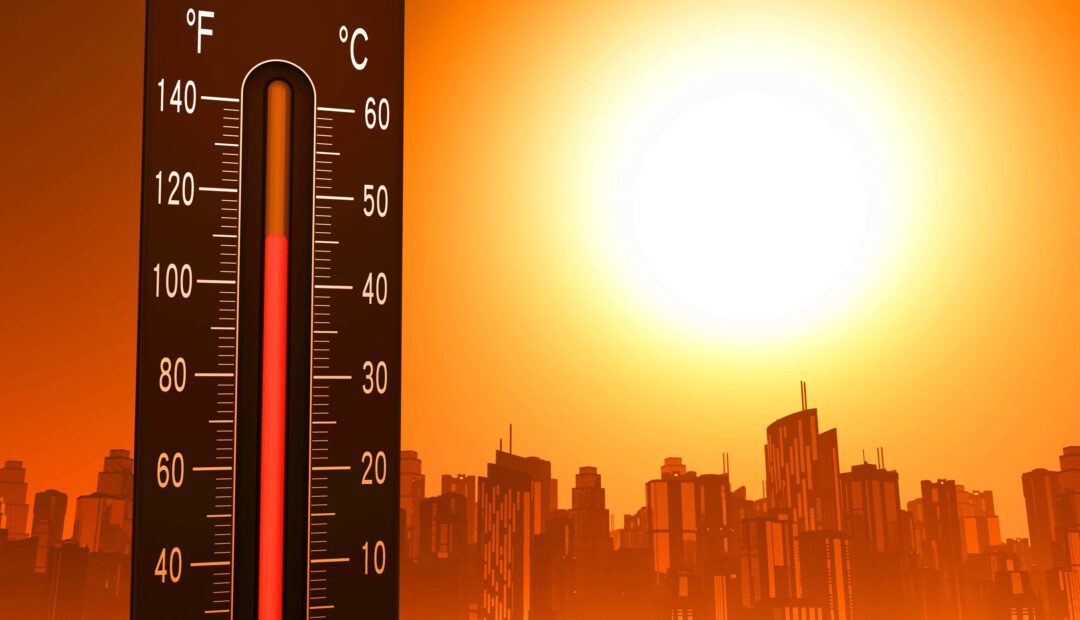Introduction to the upcoming heatwave and its potential consequences
As summer approaches, the U.S. is bracing for an intense heatwave that promises to unleash record-breaking temperatures across much of the country. Meteorologists are sounding the alarm as they predict sweltering conditions that could put a strain on both our health and infrastructure. This extreme weather event isn’t just another seasonal spike in temperature; it’s a reminder of how climate change is altering our weather patterns and intensifying heatwaves.
With soaring mercury levels come serious risks—from heat-related illnesses to increased energy demands that can lead to power outages. As we gear up for this blistering season, knowing what’s at stake is crucial for survival and comfort. Are you prepared to beat the heat? Let’s dive deeper into what this impending scorcher means for you, your loved ones, and your community.
The science behind heatwaves and why they are becoming more frequent
Heatwaves occur when high-pressure systems trap warm air close to the ground. This phenomenon leads to prolonged periods of scorching temperatures. As global temperatures rise, these events become more frequent and intense.
Climate change plays a crucial role in this trend. Increased greenhouse gas emissions lead to higher baseline temperatures, making extreme weather, including heatwaves, more common.
Urbanization adds fuel to the fire; cities create their own microclimates due to concrete surfaces absorbing and retaining heat. This urban heat island effect exacerbates temperature spikes during summer months.
Changes in atmospheric patterns also contribute significantly. Shifts in jet streams can result in stagnant air masses that keep regions sweltering for longer durations.
Understanding these dynamics helps us see why preparing for extreme weather is essential as we head into hotter summers ahead.
Health risks associated with extreme heat and how to stay safe
Extreme heat poses serious health risks that can affect anyone, but the most vulnerable are often the elderly and those with pre-existing conditions. Heat exhaustion and heat stroke are common dangers during a severe heatwave. Symptoms may include headaches, dizziness, rapid heartbeat, and confusion.
To stay safe in rising temperatures, it’s crucial to recognize these signs early. Staying hydrated is essential; drink plenty of water even if you don’t feel thirsty. Avoiding alcohol and caffeine can also help maintain your hydration levels.
Seek shade or air-conditioned spaces whenever possible. If you must be outdoors, wear lightweight clothing and apply sunscreen regularly to protect yourself from harmful UV rays.
Keep an eye on friends and family who might struggle more than others. Regular check-ins can make all the difference in ensuring everyone stays safe throughout this extreme weather event.
Strategies for coping with the heat, such as staying hydrated and finding cool places to seek shelter
Staying cool during a heatwave is essential for your well-being. Hydration is key. Drink plenty of water throughout the day, even if you don’t feel thirsty. Avoid alcohol and caffeine, as they can dehydrate you.
Seek out air-conditioned spaces whenever possible. Shopping malls, libraries, and community centers often provide a much-needed refuge from the sweltering sun. If you’re at home, consider using fans to circulate air or closing curtains during peak sunlight hours.
Dressing appropriately also makes a difference. Light-colored clothing made from breathable fabrics can help keep your body temperature down.
Don’t forget about outdoor activities; early mornings or late evenings are ideal for exercise or walks when temperatures aren’t as extreme.
Connect with neighbors who might need assistance finding shade or transportation to cooler areas—community support can make all the difference during extreme weather conditions.
The impact on infrastructure, specifically power grids, and tips for conserving energy during the heatwave
As temperatures soar during this severe heatwave, the strain on power grids increases. High demand for air conditioning puts systems under pressure, leading to potential outages.
Residents can take simple steps to help alleviate this burden. Setting thermostats a few degrees higher can significantly reduce energy consumption without sacrificing comfort.
Using fans strategically also helps circulate cool air and makes indoor environments more bearable. Consider closing blinds or curtains during peak sunlight hours to keep spaces cooler naturally.
Additionally, unplugging unused electronics prevents phantom energy drain. Every little effort counts when it comes to conserving electricity in extreme weather conditions.
Communities should be aware of their local resources too; some areas may offer cooling centers where residents can escape the intense heat while keeping their homes powered down for relief elsewhere.
How communities can come together to support vulnerable populations during extreme weather events
As the heatwave approaches, it’s crucial for communities to rally together. Extreme weather events like this can leave vulnerable populations at greater risk. The elderly, low-income families, and those without access to air conditioning are particularly susceptible to the dangers of extreme temperatures.
Community organizations can play a vital role during these times. Local shelters could open their doors for those in need of relief from the sweltering heat. Neighborhoods might also consider setting up cooling stations or designated community centers where people can gather safely away from the oppressive temperatures.
Additionally, outreach programs that connect volunteers with individuals who may be isolated are essential. Checking on neighbors and offering assistance can make a significant difference in someone’s well-being during such extreme conditions.
Education is key too; sharing information about resources available will empower everyone to seek help if needed. Communities should promote awareness about signs of heat-related illnesses and encourage proactive measures among residents.
By working together and supporting each other, we strengthen our resilience against severe weather impacts while ensuring no one gets left behind when facing nature’s harsh realities.




